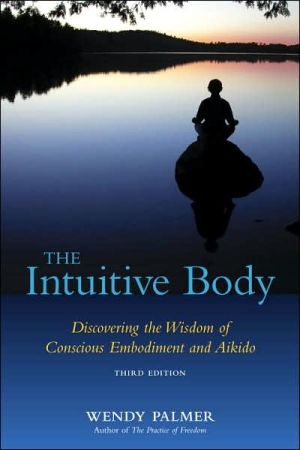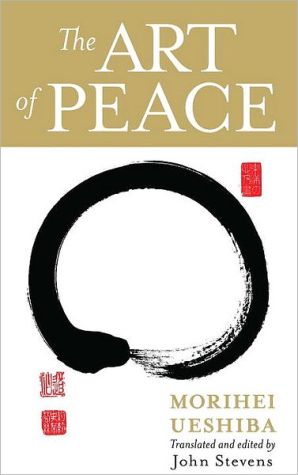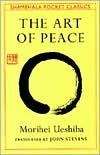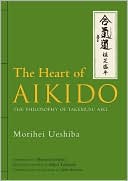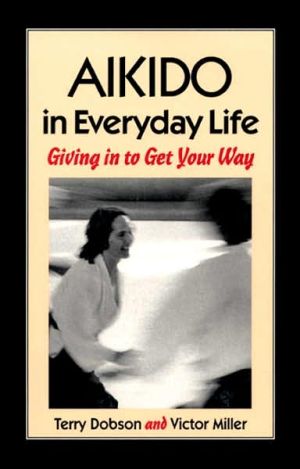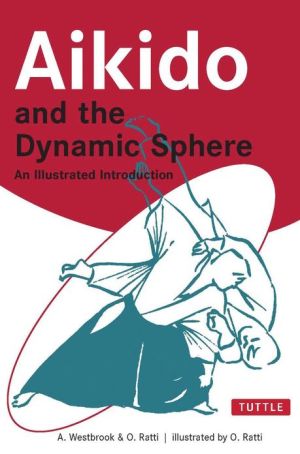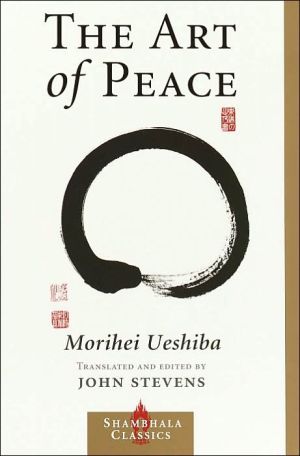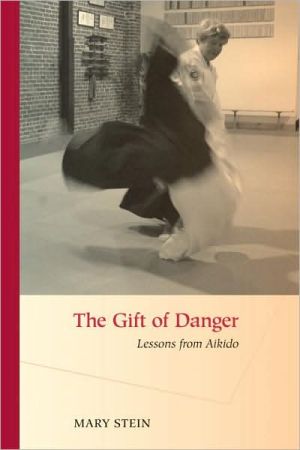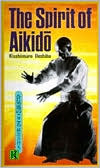The Intuitive Body
The Intuitive Body draws on the principles of the non-aggressive Japanese martial art aikido and meditation to present a fresh approach to cultivating awareness, attention, and self-acceptance. Author Wendy Palmer shows readers through basic practice and partner exercises how to become more aware of the body and trust its innate wisdom. She introduces exercises from the Conscious Embodiment and Intuition Training program she pioneered, connection movement, meditation, and breathing. These...
Search in google:
The Intuitive Body draws on the principles of the non-aggressive Japanese martial art aikido and meditation to present a fresh approach to cultivating awareness, attention, and self-acceptance. Author Wendy Palmer shows readers through basic practice and partner exercises how to become more aware of the body and trust its innate wisdom. She introduces exercises from the Conscious Embodiment and Intuition Training program she pioneered, connection movement, meditation, and breathing. These exercises form a daily practice that can help the process of integration, of deepening and unifying the self, and learning to deal with fear and anger. Written in a direct yet nurturing style and based on the author’s many years of practice and teaching, this revised edition of The Intuitive Body contains new material on Conscious Embodiment movement and meditation practices. Also here are new chapters on advocating without aggressing and the wisdom of not knowing — embodying the qualities of dignity and integrity in everyday life. The book is ideal for readers who are already engaged in the process of becoming, as well as for those who are looking for ways to find the courage to begin.
From the Introduction: How This Book Works\ In this book I am presenting my approach to rediscovering the part of ourselves that is wise, kind, and capable of clear and powerful embodied action. This way of being arises out of what I call the “intuitive state,” a spontaneous, intelligent, and creative aspect of ourselves which has not been distorted by our fear and confusion.\ Intuition usually arises in a nonlinear fashion. In our Western culture, the habit of sequential thought has been given a superior role in respect to the way life is viewed. In my opinion, based on living in this culture and experiencing the result of this priority, it does not work. It has not made us happy. There are millions of years of evolution in our cells. A deep store of wisdom lies within and we must look within to access it. We can use our discomfort and dissatisfaction with life to investigate other possibilities or ways of living. We can invite our intuition, our wise knowing, to govern or lead our choices toward a full embrace of life.\ The first part of this book deals with becoming grounded in our bodies. Without a firm root system or foundation, intuitive perceptions cannot be focused into embodied action. The second section discusses mental perception and working with the movement and power of our thoughts. This paves the way for us to find how to create a spacious environment from which the wisdom of our intuition can arise, as discussed in the third section. The fourth part addresses the nature of embodied action: irimi, entering fully into life situations, and how to work with our perceptions during the many activities and pressures of life. The practice guides at the end of the book are provided as outlines for quick reference to the techniques described in the previous sections.\ It is my hope that you will feel free to take these ideas and make them your own by adjusting them to suit your inner needs. The techniques can be used as they are or changed and integrated into your already existing practice. Each of us is a unique individual. When we are sensitive to our own personal experiences, we lend compassion and support to ourselves by being creative. If we can live in a way that promotes a little more kindness and a little less greed, we will have served ourselves and our planet beautifully.
Preface to the New Edition Foreword to the 2000 Edition by Sue Bender Foreword by George Leonard IntroductionEmbodying a DreamLooking at the Foundations of My PerceptionsThe Influence of Aikido Traditions in My LifeHow the Videotape Supplements WorkHow This Book WorksPart I. The Body—Establishing Our GroundChapter 1. Coming to the PathA Reference Point and a TechniqueInto the PresentComing Into SensationKnowing the RiverChapter 2. The Elements of Basic PracticeA Centering Triad: Three Parts of Attentional ConcentrationUtilizing Our BreathBalancing Our Energy FieldFeeling GravityPracticing the TechniquePersonalizing Basic PracticePracticing and Accepting the MysteryChapter 3. Adding a QualityWhy a Quality?Identifying a QualityUsing the Body as the TeacherA Centerpiece for PracticeChaper 4. Energy and StabilityEnergy Follows AttentionEmbellishing Our Center PracticeA Spiral-Breath MeditationTake Your TimeChapter 5. LearningApproaches to LearningInterest versus FearThe Grinch and the “Yes .... And, ...” TechniquePractice and TrainingMistakesFilling in a HolePart II. The Mind—Shaping Our ConceptsChapter 6. The Spirit of InquiryThe Habit of InterestThe Fine Art of QuestioningA Buoyant State of CuriosityThe Don’t-Know MindChapter 7. Not-KnowingA Journey into EmptinessTimingMysteryStrength of SpiritChapter 8. IntuitionWorking from a Stable BaseNot-Knowing: The DoorwayCreating Manageable Pieces for the ProcessInterpretingNonverbal CommunicationPart III. Wisdom Arising—Ways Our Soma is OrganizedChapter 9. The Energetic FieldShaping Our Field:Triangle, Square, and CirclePracticing Being Both Positive and ReceptiveChapter 10. Attentional StatesDropped AttentionOpen AttentionEllipted AttentionBlended AttentionTraining Attentional StatesChapter 11. SplitsBasic Splits in the BodyDisembodiment The ObserverThree Centers: Head, Heart and HaraTechniques Toward Unification: Healing the SplitOverrideHow Do I Know When I Am Unified?Part IV. Embodied ActionChapter 12. IrimiThe Spirit of IrimiFacing Our FearEvolving by Manageable PercentagesCounterphobiaThe Irimi of QuestioningChapter 13. Different ApproachesThe Masculine–The Motivating ForceThe Feminine and Non-ActionBalance: Integrating Masculine and FeminineThe Magical TurnaroundDiscovering Aspects of Our BeingChapter 14. The Path Never EndsThe Dance of Clarity and ObscurityOur Human PrerogativeChapter 15. IntegrationStage One: Seeing What IsStage Two: Accepting What Has Been SeenStage Three: Changing the SituationThe ProcessThe JourneyChapter 16. Advocating Without AggressionEnlightened SchizophreniaVertical and Horizontal Listening: The Receptive Circle ShapeAdvocating: The Irimi ShapeThe Sword That Gives LifeChapter 17. Balancing Mastery and MysteryMasteryFormConcentrationContainmentMysteryThe Flow StateNot-knowingThe Balance of Mastery & MysteryRecognizing ‘Agenda Based’ Not-knowingConclusion Part V. Practice GuidesUtilizing Your BreathBalancing Your Energy FieldFeeling GravityEvoking and Choosing a QualityBasic PracticeSpiral-Breath Meditation“Yes.... And, ...” TechniquePositive/ReceptiveDropped AttentionOpen AttentionMetta Meditation
